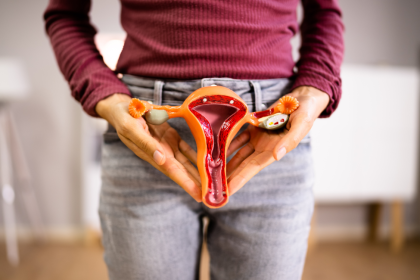That twinge in your back. The unexplained hip pain. The slight shrinking in height you’ve noticed lately. Your body is sending signals that your skeleton might be losing the battle against time. After 40, bone density naturally begins to decline, but most of us don’t realize it until that devastating first fracture.
Here’s the truth nobody’s talking about. The standard calcium supplement recommendation isn’t enough to maintain strong bones through your second half of life. Your skeleton craves a complex matrix of nutrients that work synergistically, and the right foods deliver this package far better than any pill.
The calcium trap that’s failing your skeleton
Everyone knows calcium builds bones. It’s probably the only bone nutrient most people can name. But focusing solely on calcium is like trying to build a house with just bricks and no mortar, foundation, or framework. Your body needs so much more to construct and maintain strong bones.
What’s more concerning is that many people load up on calcium supplements without the accompanying nutrients needed for proper absorption and utilization. This can actually lead to calcium depositing in arteries rather than bones, potentially increasing cardiovascular risk while doing little for skeletal strength.
The solution isn’t abandoning calcium but surrounding it with its essential partner nutrients. Real, whole foods provide these complex nutrient packages in forms your body recognizes and uses efficiently. No supplement can replicate the intricate balance of minerals, vitamins, proteins, and fats that nature packages together.
The vitamin K secret that unlocks calcium’s potential
Beyond calcium lies an unsung bone-building hero. Vitamin K2 acts like a traffic director in your body, ensuring calcium ends up in your bones and teeth where it belongs, rather than in soft tissues where it can cause harm. Without adequate K2, calcium supplements can be ineffective at best and problematic at worst.
Dark leafy greens like kale, collards, and turnip greens deliver vitamin K1, which your body can partially convert to K2. For direct K2 sources, fermented foods reign supreme. Natto, a traditional Japanese fermented soybean dish, contains the highest known levels of K2, though its strong flavor and texture can be an acquired taste.
More palatable options include aged cheeses like gouda, brie, and cheddar, where bacteria have created K2 during the fermentation process. Pastured egg yolks and grass-fed butter also provide smaller but significant amounts, reflecting the natural diet of animals allowed to forage.
Adding these foods to your daily routine doesn’t require major dietary overhauls. Even small amounts provide meaningful benefits. A sprinkle of aged cheese on vegetables or a pastured egg with breakfast delivers bone-supporting K2 that helps make every calcium molecule count.
The magnesium effect that transforms bone architecture
Approximately 60% of your body’s magnesium resides in your skeleton, yet most Americans consume far less than they need. This mineral doesn’t just support bone density, it changes bone architecture, making bones less brittle and more resistant to fracture.
Magnesium deficiency is particularly concerning after 40, as the body becomes less efficient at absorbing and retaining this vital mineral. The signs can be subtle, from muscle cramps and fatigue to insomnia and anxiety, while the long-term skeletal impact accumulates silently.
Pumpkin seeds top the list of magnesium-rich foods, with a single ounce providing nearly half your daily needs. Their convenient size makes them an ideal portable snack or salad topper. Dark chocolate delivers not only magnesium but also flavanols that may independently support bone health, making it perhaps the most delicious bone-building food.
Avocados offer a creamy way to boost magnesium intake while providing healthy fats that further enhance mineral absorption. Even the water you drink can contribute, with mineral water from certain sources containing significant magnesium levels along with trace elements beneficial to bone.
Incorporating these foods daily helps create the optimal calcium-to-magnesium ratio your bones need to remain strong and flexible. Think of calcium as providing bone density and magnesium as providing bone quality, both essential components of fracture-resistant bones.
The protein paradox solved for maximum strength
Conventional wisdom once suggested that high-protein diets could leach calcium from bones. Modern research has completely reversed this understanding, showing that adequate protein is essential for bone maintenance, especially after 40 when muscle mass naturally begins to decline.
Protein provides the structural matrix upon which bone minerals are deposited. Without sufficient protein, your body cannot build or maintain bone effectively regardless of mineral intake. Additionally, higher protein intake supports muscle maintenance, which places beneficial stress on bones through movement.
Sardines offer a bone-building triple threat, providing highly absorbable calcium from their edible bones, omega-3 fatty acids that reduce bone-damaging inflammation, and high-quality protein. Their convenience and affordability make them a practical addition to regular meals.
For plant-based options, tempeh delivers a fermented form of soy that maximizes mineral availability while providing complete protein. Lentils combine protein with minerals like magnesium, potassium, and zinc that all contribute to skeletal health. Even modest portions of these foods make meaningful contributions to bone maintenance.
The key is consistency rather than quantity. Including protein at each meal signals your body that resources are available for tissue maintenance, including the constant remodeling process your bones undergo throughout life.
The acid-alkaline balance that stops mineral theft
Your body tightly regulates blood pH, drawing minerals from bone if necessary to maintain balance. A diet high in acid-forming foods forces your body to release bone minerals as buffers, gradually depleting skeletal reserves over decades.
Most fruits and vegetables produce an alkaline effect after digestion, reducing the mineral burden on your bones. Particularly powerful are potassium-rich foods like bananas, sweet potatoes, and spinach, which help neutralize dietary acids and conserve calcium stores.
Sprouts represent perhaps the most alkaline-forming foods available, with broccoli sprouts offering the additional benefit of sulforaphane, a compound that may directly stimulate osteoblast activity, the cells responsible for building new bone tissue.
The practical approach isn’t eliminating acid-forming foods like grains and proteins, which provide other essential nutrients, but balancing them with abundant plant foods. Simply filling half your plate with vegetables at lunch and dinner can transform your acid-alkaline balance without complicated rules or restrictions.
The omega connection that reduces bone breakdown
Chronic, low-grade inflammation accelerates bone loss through increased activity of cells that break down bone tissue. Omega-3 fatty acids help moderate this inflammatory response, slowing bone resorption while supporting the building phase of bone remodeling.
Fatty fish like salmon, mackerel, and trout provide the most bioavailable forms of omega-3s. Even modest servings twice weekly can reduce inflammatory markers associated with accelerated bone loss. For daily omega-3 support, walnuts and ground flaxseeds provide plant-based alternatives that can be easily incorporated into meals.
What many people don’t realize is that reducing omega-6 intake may be just as important as increasing omega-3s. Minimizing processed vegetable oils in cooking and packaged foods improves the omega ratio, letting the bone-protective effects of omega-3s shine through. Simple swaps like using olive oil instead of corn or soybean oil can make a significant difference.
The omega effect extends beyond direct bone impact. These essential fats also support muscle health, cardiovascular function, and brain health, creating a foundation for the active lifestyle that further supports bone strength through weight-bearing movement.
The bottom line on feeding your skeleton
The foundations of bone health extend far beyond calcium alone. By embracing a diverse diet rich in minerals, vitamins, protein, and beneficial fats, you provide your body with the complete toolkit it needs to maintain and even improve bone strength after 40.
These dietary changes work best alongside weight-bearing exercise, adequate vitamin D, and proper hydration. Together, they create an environment where your body prioritizes bone maintenance despite the natural challenges of aging.
The beauty of focusing on whole foods for bone health is that the same dietary pattern that supports your skeleton also protects your heart, brain, muscles, and metabolism. This integrated approach acknowledges that true health isn’t compartmentalized but interconnected, with each system supporting the others throughout the aging process.

















